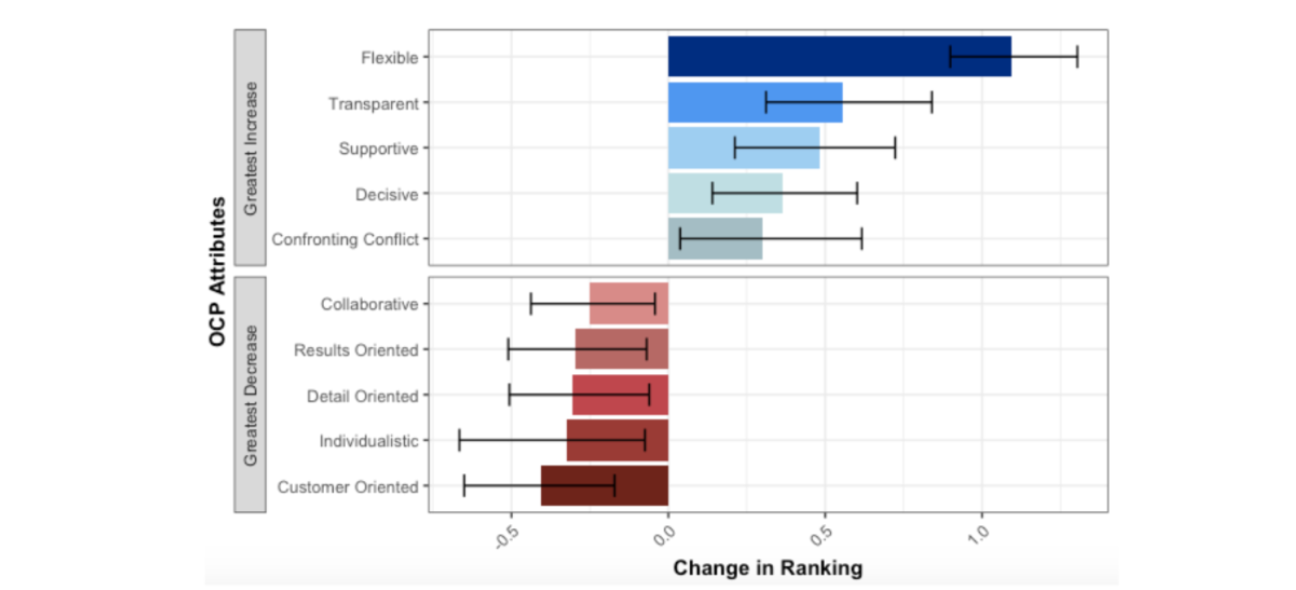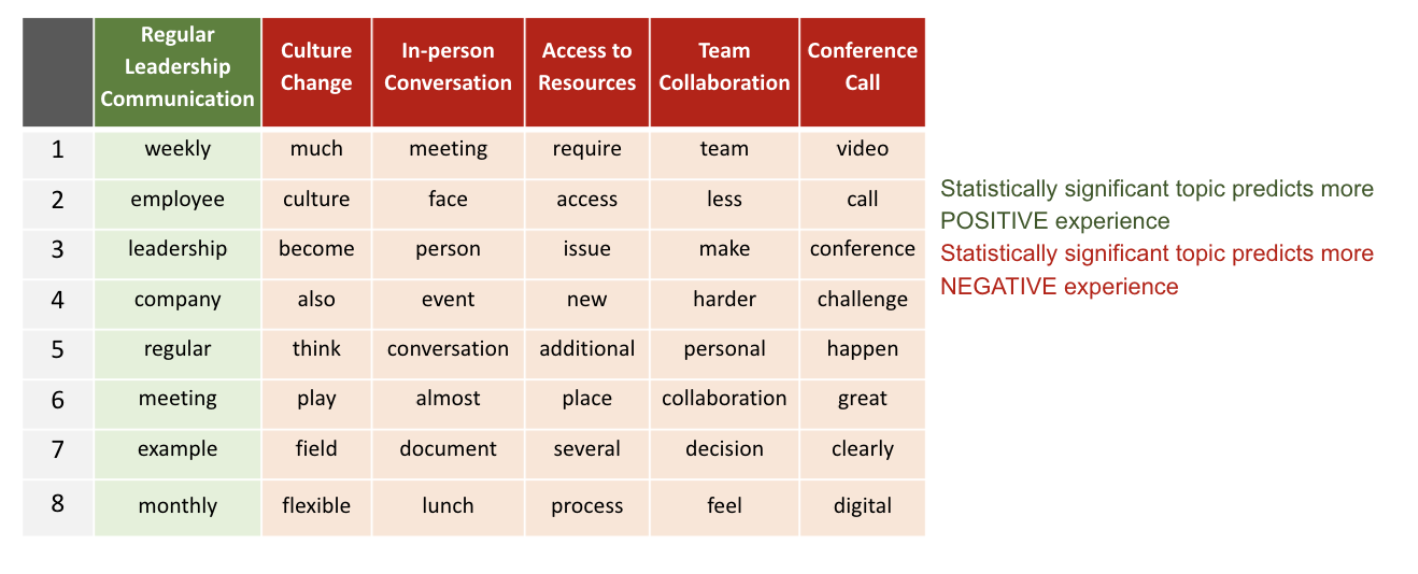California Management Review
California Management Review is a premier professional management journal for practitioners published at UC Berkeley Haas School of Business.
N. Derek Brown, Yixi Chen, Hope Harrington, Paul Vicinanza, Jennifer A. Chatman, Amir Goldberg, and Sameer Srivastava

Image Credit | Oleg Shcherba
As COVID-19 begins to recede with the growing availability of the life-saving vaccines, astute organizational leaders are reflecting on how their organizations have changed in response to the uncertainty and intense strain of the pandemic and are considering what further adaptations might be necessary. Much attention has focused on visible forms of change such as demand swings that have, in some cases, required furloughs and layoffs and, in others, frantic hiring sprees. In fact, many organizations have shifted when and where people work and are preparing for the transition back to in-person or hybrid work. Yet organizations have also undergone less visible and more subtle changes that are equally critical to surface so that leaders can make informed strategic decisions and determine how to support new strategic choices with potential adjustments to their organizational structure and culture.
“The Blinkered Boss: How Has Managerial Behavior Changed with the Shift to Virtual Working?” by Julian Birkinshaw, Maya Gudka, & Vittorio D’Amato
“Balanced Workplace Flexibility: Avoiding the Traps” by Ellen Ernst Kossek, Rebecca J. Thompson, & Brenda A. Lautsch
Anecdotes abound about how some facets of organizational culture, even among many strong culture organizations, have buckled under pandemic-related pressure, while new facets of culture have emerged in response to a rapidly changing external environment—including racial unrest and political turmoil. Some changes such as surprising productivity increases in the context of remote work and “walk and talk” meetings that have taken the place of in-person one-on-ones have been described as “silver linings,” while others such as the sense of social isolation and the loss of group cohesion are labeled “dark clouds” that may have long-term adverse consequences.
Decades of academic research have shown how cultivating a strategically relevant culture boosts organizational performance and individual well-being. It is therefore critical to assemble systematic evidence about how organizational cultures have changed, positively and negatively, as a result of the COVID-19 pandemic. We conducted the Berkeley-Stanford “Silver Linings” Study to identify patterns of culture change across a diverse range of organizations. We employed a unique methodology in which we randomly assigned half of respondents in a given organization to assess the culture that existed before the pandemic and the other half to evaluate the current culture, enabling us to identify key changes in culture resulting from the pandemic.We validated that this method reliably uncovers culture change using data from one organization in which we were able to assess the culture before the onset of the pandemic and then again 18 months into the pandemic. We also collected open-ended narratives that yielded complementary insights about how people experienced cultural changes.
Our sample includes 2,771 individuals from over 40 organizations. Although the sample is not nationally representative given that it mostly includes alumni of the two universities represented by our authorship team, it includes organizations spanning such diverse sectors as health care, technology,finance, consulting, and consumer packaged goods and individuals from different hierarchical levels and at various career stages.
Three patterns emerged from our study. First, as shown in Figure 1, the COVID-19 pandemic led organizations to emphasize certain cultural elements and to downplay others. In particular, the five cultural elements that organizations placed greater emphasis on were: flexibility, transparency, supportiveness, decisiveness, and confronting conflict. At the same time, the five cultural elements that organizations deemphasized in response to the pandemic were: customer orientation, individualism, detail orientation, results orientation, and collaboration. In short, organizational cultures in the pandemic era have generally shifted away from a high performance orientation to one that prizes empathy, understanding, and mutual support.
Figure 1 - Cultural Attributes that became more and less prominent during the COVID-19 pandemic

Second, our analyses of the open-ended narratives suggest that, when we dig below the surface of these high-level cultural attributes, employees have experienced some of the cultural changes positively and others quite negatively. Figure 2 shows the results of a “topic model” that we applied to the open-ended text responses to identify salient cultural themes. We correlated these topics with participants’ reports of whether they experienced change as positive or negative. Only one topic—regular leadership communication—was associated with net positive experiences. Interestingly, flexibility did not emerge as a positively associated topic—perhaps because its advantages (e.g., no commute) were matched by certain negatives (e.g., crowded quarters at home). Topics related to accessing resources, the way employees were communicating and collaborating, and culture change more generally were associated with net negative experiences. These results suggest that, even if most organizations endured the transition to remote work without experiencing a significant productivity decrease, the shift has been jarring for many, with potentially detrimental consequences for cultural vitality.
Figure 2 - Topics in narrative responses that were significantly associated with net positive or net negative experiences of change

Third, different employee groups had very different experiences of these organizational changes. In particular, non-white participants reported having a more negative experience of the pandemic and felt less optimistic about the future relative to white participants. One possible explanation is that non-white participants generally viewed their organizational culture following the pandemic as less transparent than did white participants.
During the prolonged COVID-19 crisis, leaders understandably shifted their focus away from culture to more pressing questions such as stabilizing supply chains and implementing health and safety protocols.
Although the changes documented in our study are still playing out and the twin threats of new COVID-19 variants and vaccine hesitancy remain on the horizon, we believe there are some emerging implications from these findings:
During the prolonged COVID-19 crisis, leaders understandably shifted their focus away from culture to more pressing questions such as stabilizing supply chains and implementing health and safety protocols. Successfully emerging from the crisis will, in our view, require leaders to bring culture back to the center of their focus.
 Spotlight
Sayan Chatterjee
Spotlight
Sayan Chatterjee
 Spotlight
Mohammad Rajib Uddin et al.
Spotlight
Mohammad Rajib Uddin et al.